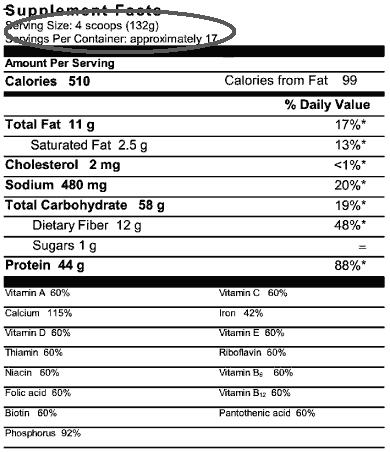How To Choose A Protein Powder

Still searching for a protein powder? Begin here.
No matter where you buy supplements, chances are they have more protein powders than just about any other kind of product. That may be why one of the most common questions we receive is simply, how do I chose one from among all these options? Well it’s really a very simple process once you understand some of the basics. Here’s a quick and easy guide to choosing a protein powder.
Just when it seems like protein powders and shakes can’t get any more popular, they get more popular. Kids, teens, parents, seniors, athletes, and convalescents are all among the users of protein shakes and supplements. Extraterrestrials have probably started using them too, for all we know. And why shouldn’t they be? As important as protein is nutritionally, people should be aware that a protein shake is one of the best, maybe THE best way to obtain high-quality protein or add extra protein to your diet. A typical protein shake has all the protein of a big steak, of 4-8 whole eggs, of a large fish fillet….but with virtually no fat, cholesterol, carbs, or extra calories. Not to mention the convenience factor; protein shakes don’t make themselves (although there are plenty of good ready-to-drink protein shakes), but there’s much less involved versus cooking a whole meal around a piece of meat or fish or making a sandwich.
Almost every nutrition company markets its own line of protein powders to take advantage of their huge popularity. As a result, there are now thousands of protein supplements worldwide, although even the best-stocked retailers only stock a few hundred at most. Still, with a hundred or more choices, users want to make sure they’re making a good choice and not overlooking anything.
So here’s a easy and systematic way to approach the search.
1) Start your search at reputable, high-profile retailer who carries all the top brands and has competitive pricing. This is how you’ll save money and have access to the widest range of choices. Smart shoppers exclusively use internet retailers like AllStarHealth, since they’re going to be less expensive than almost any brick-and-mortar store, on any product, on any day, with very few exceptions. And although it could change in the future, you won’t be charged sales tax on most out-of-state internet purchases saving you even more money.
2) Decide what kind of protein you want, or at least, get a handle on the differences between the 4 most common types. This is the most important part of your pre-purchase ‘homework’ . To get an overview of the different types, follow these links:
3) Understand that protein powders can contain one type or a blend of types. That’s the next thing to decide. Do you want a single type or a blend? Blends are becoming more and more common but 100% whey proteins like this one and this one are still the most popular overall. If you’re not an athlete or focused on muscle growth, then don’t agonize over this step, any of the protein types will give you good results.
4) Think about why you’re using the protein shake in the first place and then decide whether you want a protein-only product or if you want other ingredients besides protein. For example, if you’re going to be using the shakes in place of a meal, then you want a meal replacement powders. MRPs are beefed-up protein powders; protein plus added vitamins, minerals, carbs and fat to make your shake more nutritionally complete. If you’re going to be making protein shakes in place of meals, this is the way to go. If the idea is to help you put on more weight, then you want – surprise! – a weight gainer. Gainers are beefed up MRPs. They have a larger serving size than the other options since they’re all about helping you down a lot of calories in one shake. Keep in mind, that you can always adjust a serving size to your taste.

Weight gainers have heftier serving sizes than MRPs or protein powders.
5) At this point it should only be a question of brand and flavors.
Brands matter, but only to a point. It’s almost always a safe bet going with the most popular brands. But – once you know what type of protein you want – there’s really no substitute for trying a few different brands over the course of a few months to know which brand’s flavors and other features you like. In any event, most brands are using the same basic ingredients anyway, so within a category, the differences from brand to brand aren’t too significant. Do look at the labels for sweeteners you may want to avoid like aspartame or fructose, and pay attention to things like serving size and protein content. Look for the highest protein content per serving, taking into account differences in serving size.
Flavors are, of course, a personal preference. Most products come in, at least, vanilla and chocolate. The next most available flavor is strawberry. Of these, vanilla and strawberry are the easiest for brands to formulate for really good taste, so these are good choices for finicky palates. Chocolate is popular too, but a hard flavor for brand to formulate for a variety of reasons.
One option that’s really gaining a lot of fans is unflavored protein powder which allows you to add the sweeteners and flavors of your choosing.
And that’s really all there is to it. For protein recipe ideas, see this post.
- Posted in Miscellaneous
- No Comments



